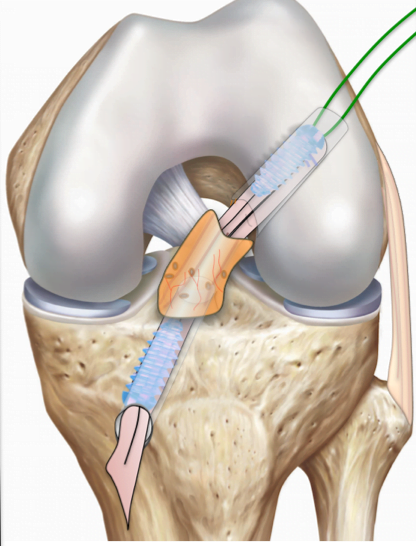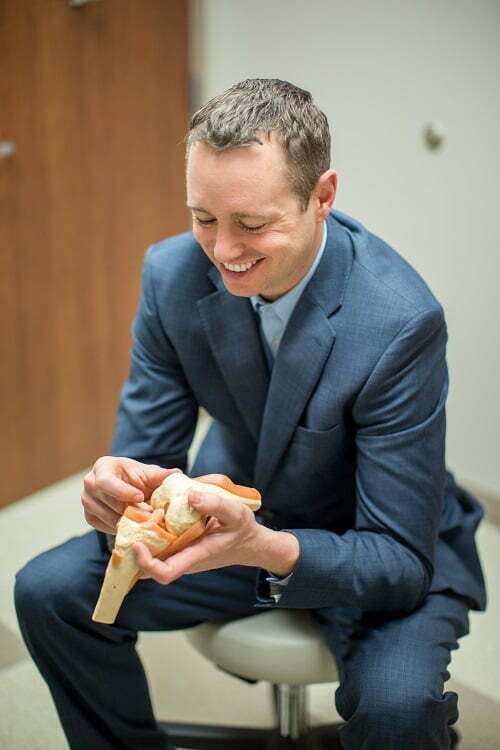The ACL is one of the most commonly damaged components of the knee. Most orthopedic surgeons remove the damaged ligament and replace it through reconstruction. However, a unique ACL treatment is available that (in many cases) may be a better option that provides early promising results.
In some studies, utilizing the biology of the remaining ACL in surgery improves the patient’s clinical results and neuromuscular control. Patients who have had both treatment options – one knee with a full “reconstruction” of the ACL with the removal of the remaining ligament and the other with the reconstruction technique using the remaining ligament (biologic) – state that the knee with the biologic reconstruction “feels more natural.”
The ACL Surgery
In most ACL surgeries, the first step is removing the torn ACL remnants. For up to 95 percent of surgeons in the U.S., this is a crucial step for visualization. Most surgeons don’t think twice about this process and believe removing the ACL stump is necessary to prevent Cyclops lesions, or notch over-stuffing, among other issues. However, European orthopedic surgeons often use different techniques.
With this technique, surgeons will arthroscopically examine the cartilage, meniscus, and other nearby components, eventually moving to the ACL remnant. At this point, they don’t take it out. Instead, a graft is brought through the ACL remnant, which allows for a biologically enhanced reconstruction. Once in place, the grafted area often looks like the natural ACL has been restored.
Benefits Offered by the New Biologics ACL Reconstruction Technique
It is important to remember that not all orthopedic surgeons have adopted this restoration technique. However, it offers several benefits that other ACL surgeries may not be able to match. For example, evidence suggests a preserved ACL remnant provides better proprioception and vascularity, which is essential for the long-term viability of the knee and the graft. Also, ACL remnants can improve the ligamentization of the graft. Other benefits include:
ACL remnants help to preserve the synovial sheath, helping with vascularization
Surrounding the ACL septum are stem cells that can contribute to the regeneration and repair of the ligament at the site of the rupture
Increase in angiogenesis and cellularity and higher biomechanical strength compared to the traditional surgery results
The human body is complex and as a result, many surgical procedures are overly complicated. However, this complexity is not always necessary to achieve the best results. Preserving the ACL remnant is smart, providing enhanced biologic reconstruction that may provide superior outcomes than traditional ACL procedures.


Recent News
Dr. Daggett on Fox 4: Basketball Injuries
Dr. Matt Daggett, sports medicine orthopedic surgeon, has a keen eye for what keeps basketball players safe and what puts them at risk for injury.
Common Soccer Injuries
Common Soccer InjuriesSoccer is an exciting, fast-paced sport where players must perform sudden acceleration, abrupt deceleration, rapid change of direction, jumping, and landing movements. The physical and fast-paced nature of the game puts players at risk for...
Connection of Emotional & Mental Health on Orthopedic Injuries
Poor functional outcomes correlate with poor emotional health, such as anxiety, depression, poor coping skills, and poor social support.
